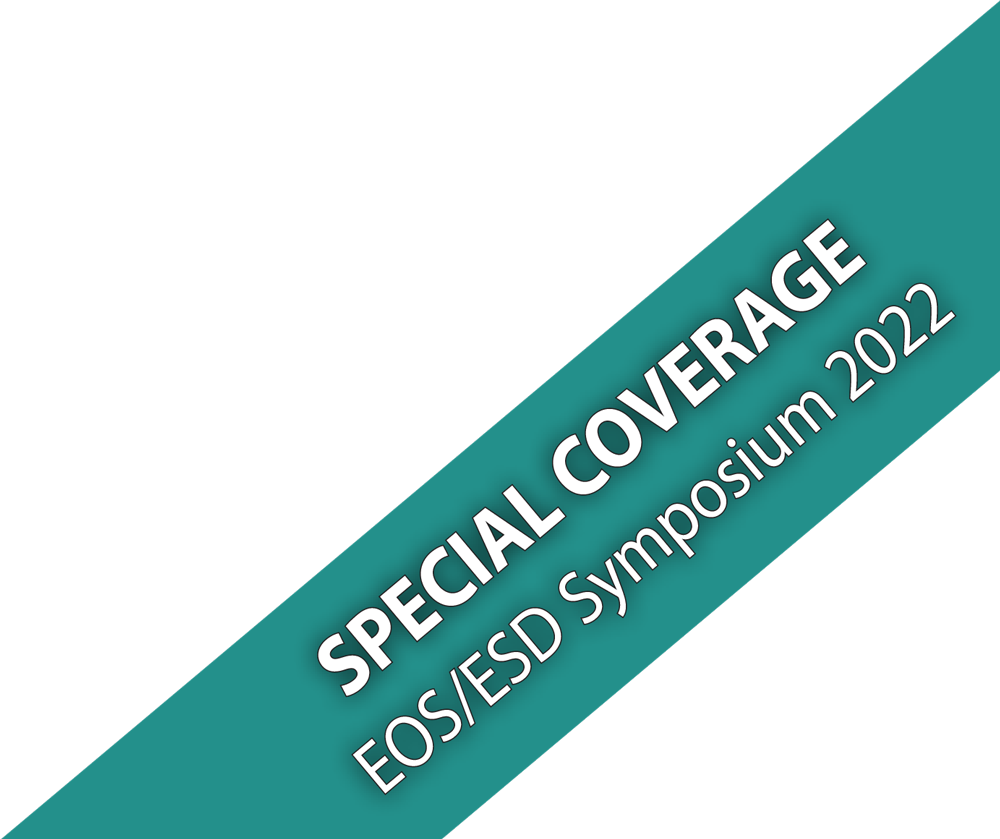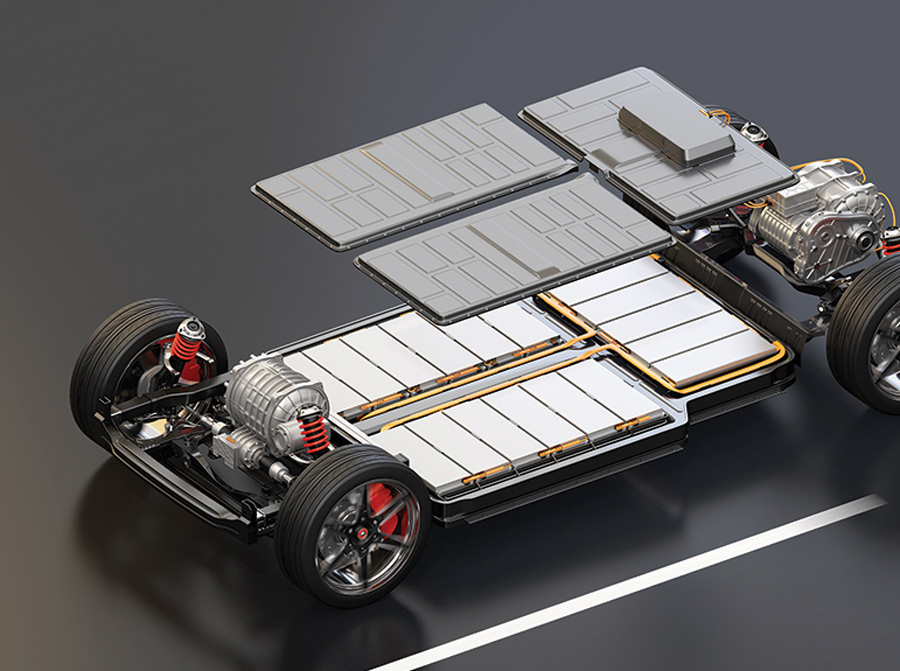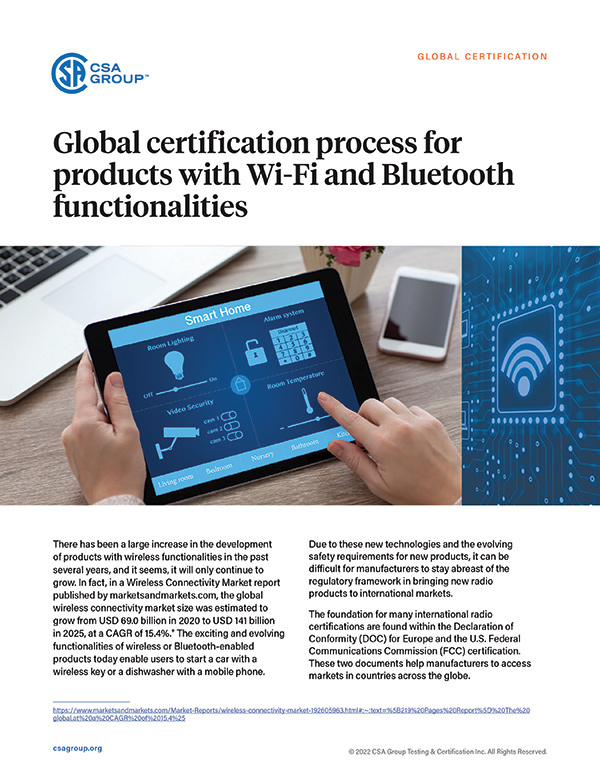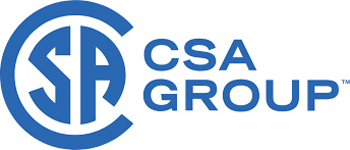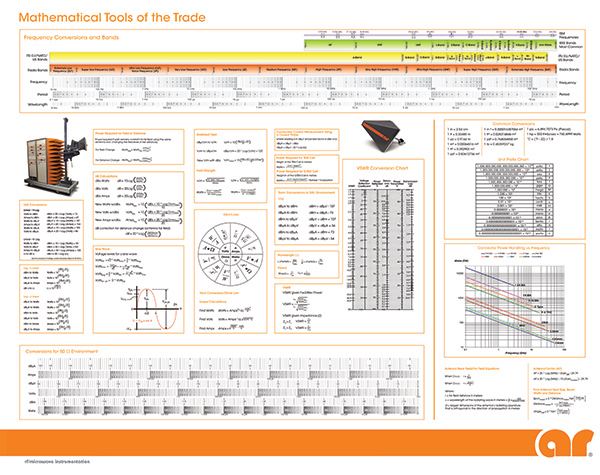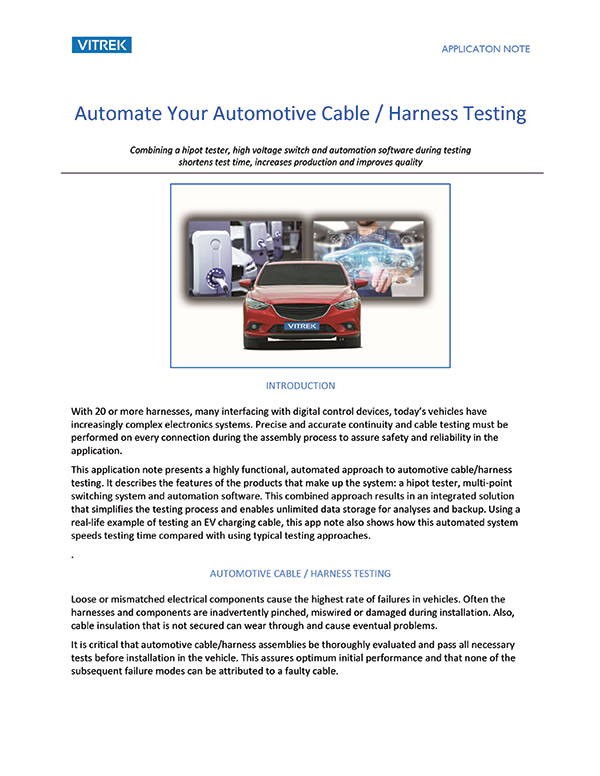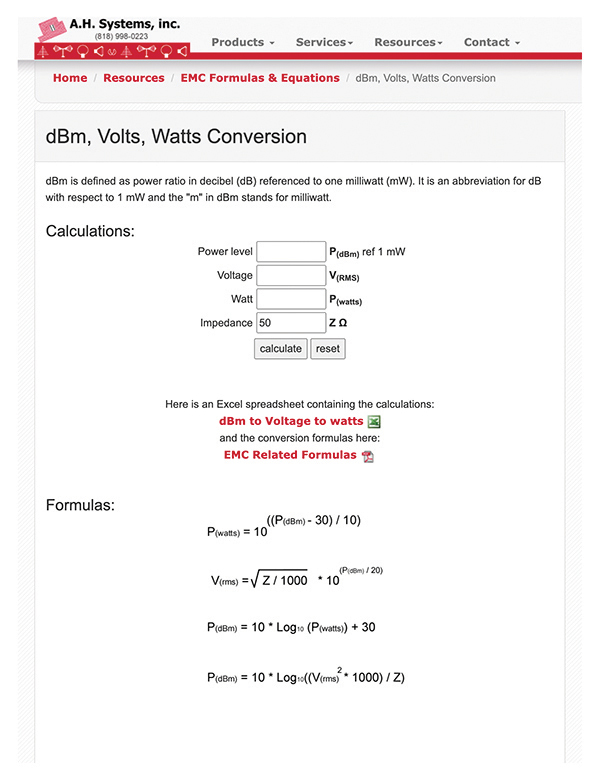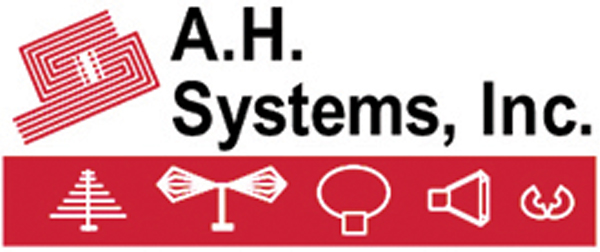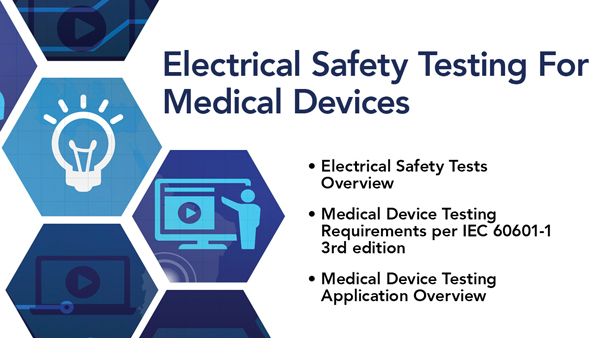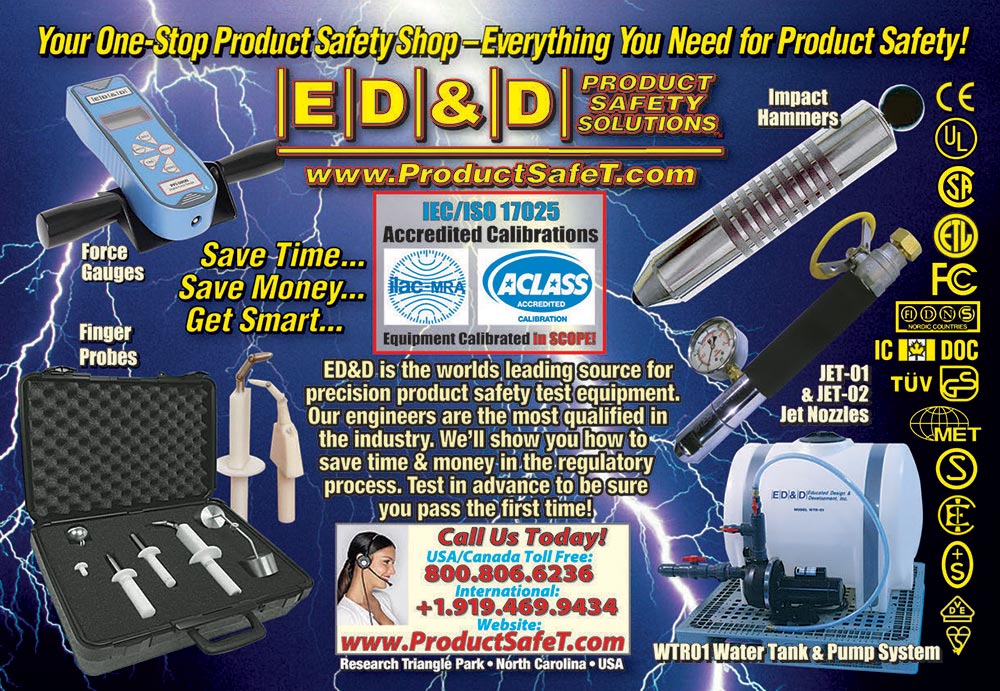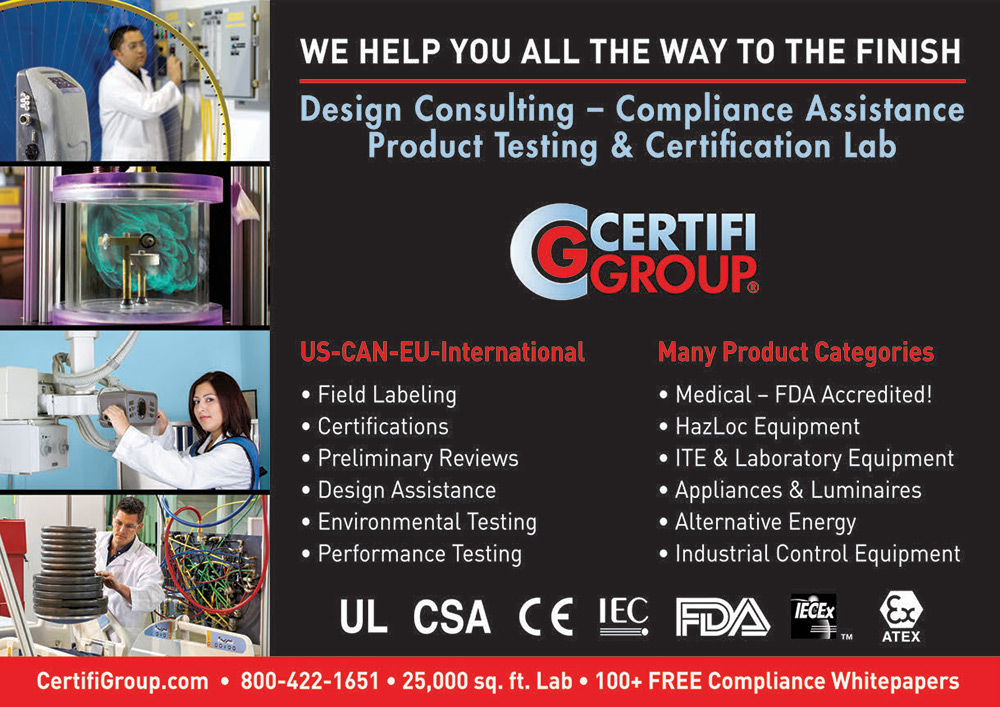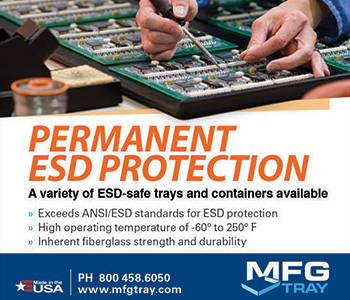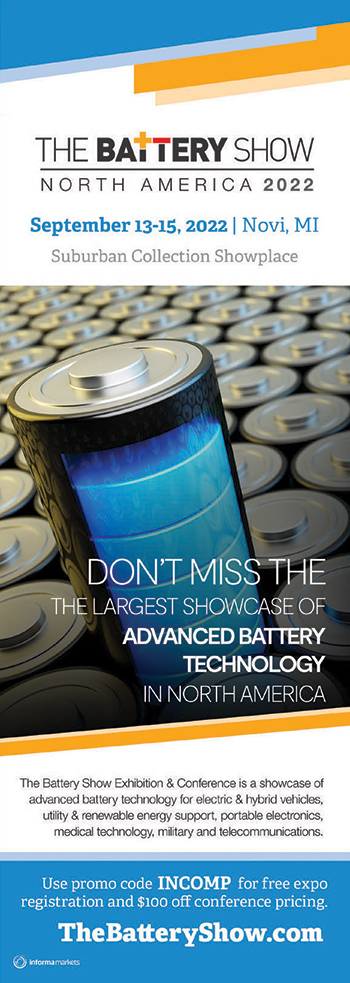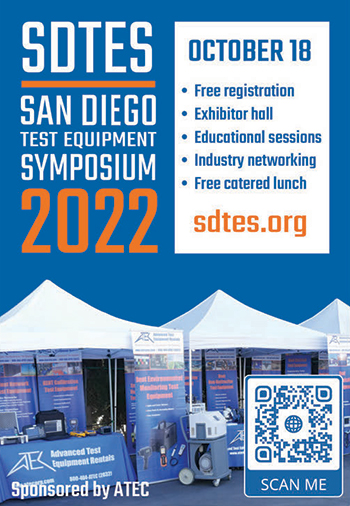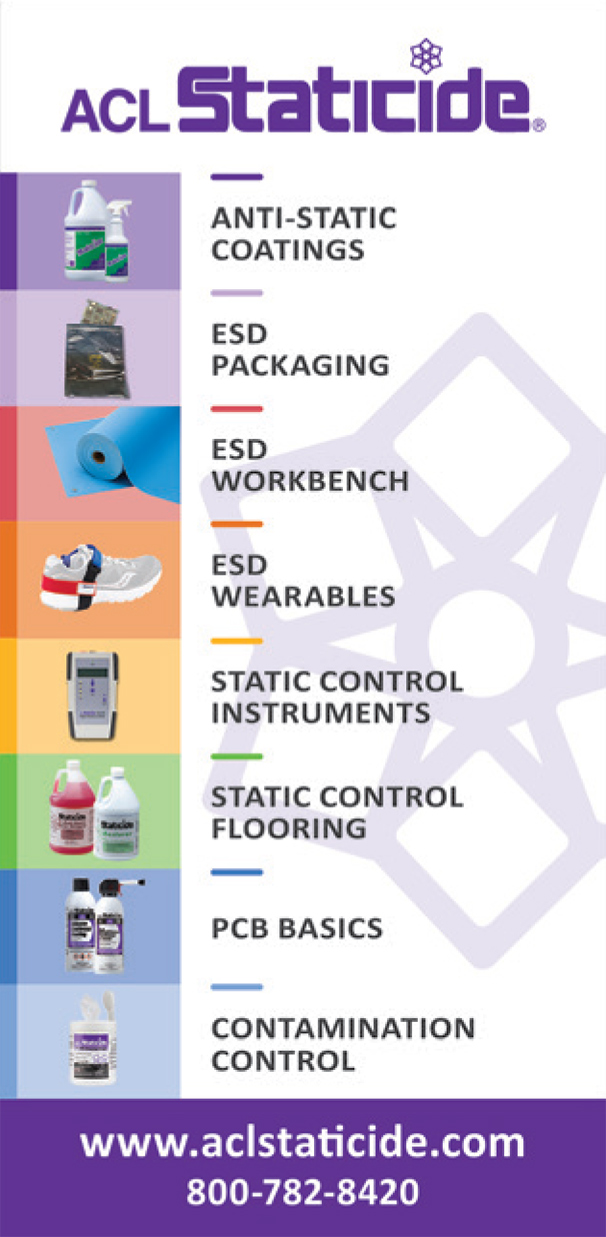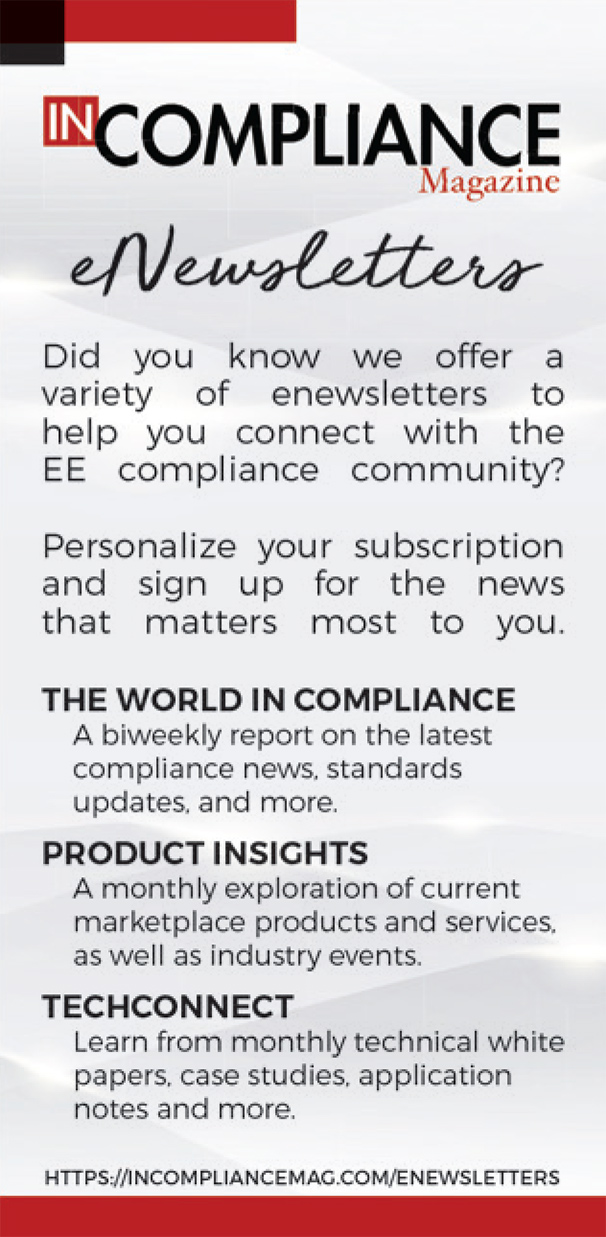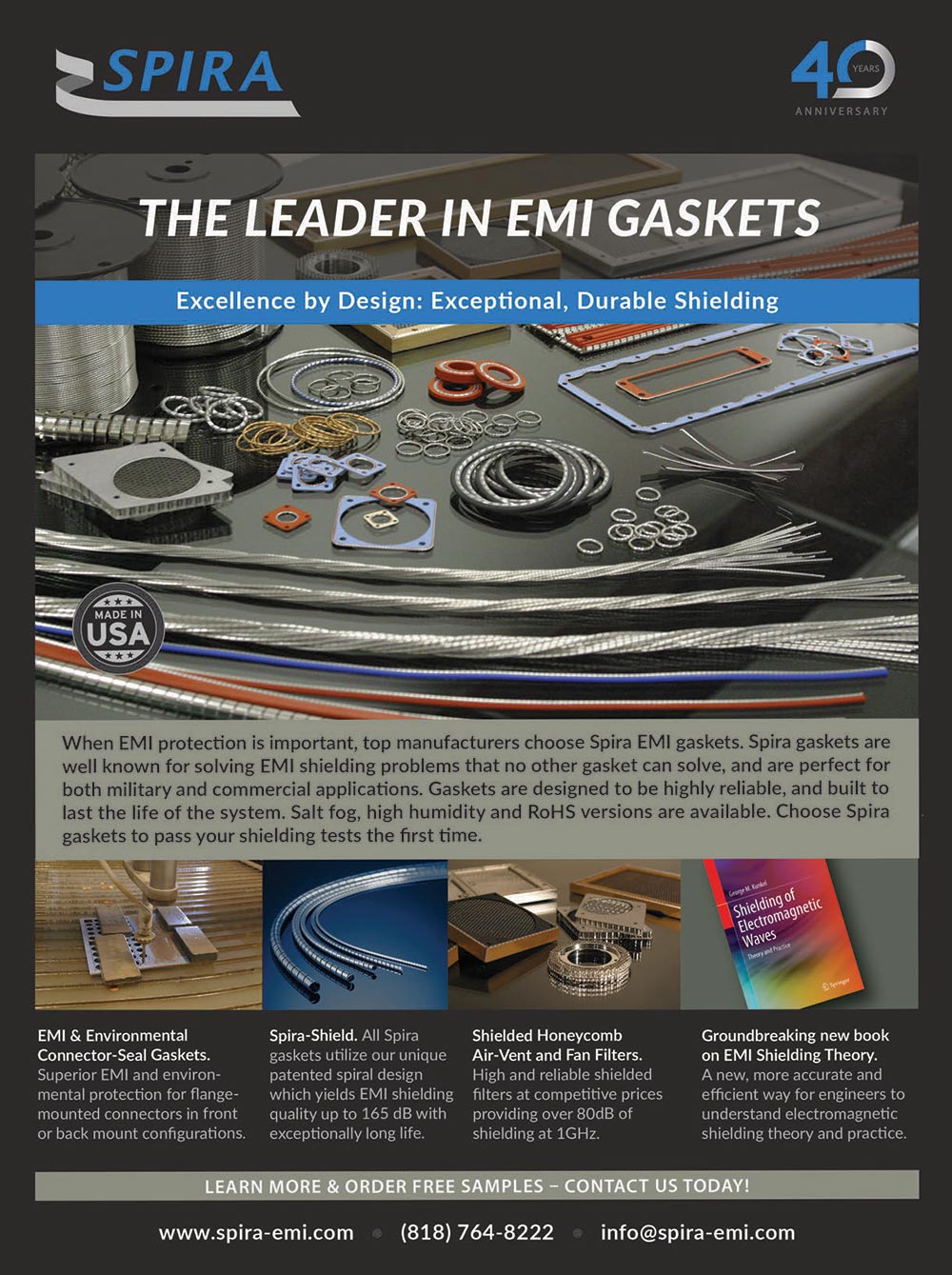
ESD Compliance in a Server Room
Getting the Best EMC From Shielded Cables Up to 2.8 GHz
ESD Compliance in a Server Room
Getting the Best EMC From Shielded Cables Up to 2.8 GHz


ISSN 1948-8254 (print)
ISSN 1948-8262 (online)
is published by
Same Page Publishing Inc.
451 King Street, #458
Littleton, MA 01460
tel: (978) 486-4684
fax: (978) 486-4691
©Copyright 2022 Same Page Publishing, Inc. all rights reserved
Contents may not be reproduced in any form without the prior consent of the publisher.
While every attempt is made to provide accurate information, neither the publisher nor the authors accept any liability for errors or omissions.
publisher
bruce@brucearch.com
keith.armstrong@
cherryclough.com
Leo@EisnerSafety.com
dgerke@emiguru.com
ken.javor@emcompliance.com
kenrossesq@gmail.com
wernerschaefer@comcast.net
Subscriptions outside North America are $129 for 12 issues. The digital edition is free.
Please contact our circulation department at circulation@incompliancemag.com
The EU’s “Blue Guide on the implementation of the product rules 2022” provides a detailed explanation of current regulations applicable to toys, measuring instruments, radio equipment, low voltage electrical equipment, medical devices, and other types of products. The Blue Guide offers readers explanations and non-binding advice on navigating the EU’s conformity assessment systems, CE marking requirements, and market surveillance activities…
According to a posting on the FDA’s website, the updated Customer Collaboration Portal went live in mid-July and now allows medical device manufacturers to upload medical device submission files for 510(k) and De Novo applications in both eSTAR and eCOPY formats. This eliminates the need for device manufacturers to create and mail compact discs or flash drives to the FDA…


he lithium-ion cell is the heart of the modern-day electric vehicle. Proper cell selection, supported by analysis and testing, can make or break a vehicle’s performance in the market. Consumer concerns of range anxiety, performance in extreme climates, and long-term reliability directly translate into brand image and warranty costs for producers.
This article will review some of the challenges and best practices associated with cell-level testing. Although the focus is on electric vehicle applications, the material presented shares applicability with other market segments in electric mobility as well as energy storage applications, both residential and grid-level.
Eclipse Conductive
(EC) Rubber
Ideal for labs,
cleanrooms, call centers,
server rooms, data centers
- Meets all aspects of ANSI/ESD S20.20
- Static generation below 20 V at any humidity
- 80 times less likely than conductive vinyl to generate over 500 volts on people wearing ordinary footwear
- Easy to install in operational spaces
Managing the EMC Process So You Can Pass the First Time

A typical first step is to interpret the relevant EMC standards that are applicable to the specific application. (Quality, safety, and environmental standards are equally if not more important, but they are not in the scope of this discussion.) One must look at the commercial EMC standards if the product is a fast charger for mobile phones and laptops. The automotive EMC standards should be applied if the product is an on-board charger (OBC) used in an electric vehicle. If it is a product based on wireless power transfer (WPT), one should refer to relevant standards and stay alert to changes as the standards are still being developed.
As an example, Table 1 lists the typical EMC test requirements that are applicable to an OBC.

tatic-control flooring provides protection against electrostatic discharge (ESD) in multiple industries servicing disparate applications that range from eliminating annoying shocks to protecting aircraft flight-tower operations from equipment malfunctions. Often referred to by the term ESD flooring, this category of flooring can protect static-sensitive electronic devices and equipment from harmful (but, due to its invisibility, seemingly inconsequential) levels of static discharge, far below the threshold of human sensitivity. In other instances, ESD flooring is installed to prevent static sparks from causing ignition of flammable chemicals, munitions, explosives, and energetic materials.
In their article “Are Data Centers Drying Up,”1 authors Beaty and Quirk discuss alternatives to humidification, like ESD flooring, for preventing real-life ESD problems in data centers, such as:
- Self-correcting errors (such as a lost package in LAN traffic);
- An upset that may need user intervention; or
- Actual physical damage to IT equipment

September 18 – 23, 2022
General Chair
The 44th EOS/ESD Symposium program has six focus areas dedicated to advanced technologies and device testing, automotive, communications, mixed voltage applications, low-power, and EMC. Each focus area comprises sessions with technical papers, invited talks, tutorials, seminars, and workshops. In parallel, the “manufacturing track” offers 3.5 days of technical sessions, hands-on sessions, workshops, discussion groups, and technology showcases in the field of EOS/ESD in manufacturing – control materials, technologies, and techniques.
The Technical Program Committee has selected 23 technical papers for the Symposium covering almost all aspects of the ESD world. These papers are presented by experts from industry and academia, driving leading-edge research and development, and have been peer-reviewed by international experts. Additionally, the RCJ Best Paper authors have been invited to present their work at the EOS/ESD Symposium.

couple of years ago, I needed to know the shielding effectiveness (SE) of screened cables up to at least 18GHz, but – apart from coaxial cables intended for use in EMC2 test laboratories – I could only find information up to 100MHz, such as Figure 1.
Accordingly, I set out to make my own measurements with the resources and time made available to me.
In these measurements, I used many different constructions of cable to try to answer the perennial debate about how best to terminate the individual shields of multiple-shielded cables, including single or double overall braids (overbraids), and individual shielded cables contained within an overbraid.
These measurements covered a great deal more than I have described in this brief article, but I am unable to report the other results for confidentiality and/or security reasons.
his is the second of two articles devoted to the Eye Diagram. Part 1 presented the fundamental definitions and concepts [1]. This article, Part 2, addresses the impact of driver, HDMI cable, and receiver on signal quality using data eye, based on the following criteria: data eye opening, data mask violation, and data jitter.
The study focused on the evaluation of eye diagrams using the following criteria: eye opening, eye mask violations, and data jitter. The data jitter was presented in the form of a histogram.
Impact of HDMI Sources
Latch‑up Survey
n July 2020, the Industry Council on ESD Target levels, in collaboration with the JEDEC JESD78 working group, launched a survey on latch-up testing. As described in an earlier article [1] in this magazine, the survey was conducted to better understand how the present latch-up standard (JESD78 revision E) is interpreted and used in the industry. The article also invited representatives from the industry to participate in order to collect data and opinions. The survey is closed, but a pdf version is still available at https://www.esdindustrycouncil.org/ic/docs/latchupsurvey2020.pdf.
This article provides a high-level overview of the Industry Council paper “Survey on Latch-up Testing Practices and Recommendations for Improvements,” which describes the full analysis of the collected responses and lays a path for potential adaptations needed to accommodate its use in future technologies and applications. Based on the survey results, we summarize the key issues documented in the paper that include problems with the latch-up standard and its application. Based on that analysis, the compiled results suggest improvements for better understanding and future JESD78 related testing. This article serves explicitly as an invitation to read the published paper, which is freely available from the Industry Council website [2] and will also become available via the JEDEC website [3].

Because of their mobility, vehicles will be placed in many different kinds of Electromagnetic environment. From driving next to transformers and high voltage power lines operating at 50 or 60Hz to driving next to airports where the approaching and landing radars operate at 1.2 to 1.4GHz and 2.7 to 3.1GHz…
Some uniformity does exist in the requirements of the POTS (plain-old-telephone-system), at least in how the equipment works. Regulatory standards that the phone equipment must comply with vary from country to country, however. No one knows this fact better than the designers at Silicon Labs. Many years ago, they set out to design a modem that would comply with every standard in the world. Thus, they created the Isomodem line of chips…
To compete in the global market, today’s analog ICs must address a wide range of application and vo9ltage requirements,” says Doug Bailey, vice-president of marketing for Power Integrations. “For example, we know that Japan’s ac main can be as low as 90V power, whereas Europe uses 240V (actually 230V rms, 240V only in the UK – Editor). At first blush, this information seems like enough to design a power supply that will operate worldwide. The reality is more difficult. In India, the power grid is unreliable, forcing many big electricity consumers to use private generators during outages…
View Index
EMC Europe 2022
September 13-15
The Battery Show
September 13-15
Fundamentals of Random Vibration and Shock Testing Training
September 13-16
Lab Techniques, Robust Design, and Troubleshooting
September 18-23
44th Annual EOS/ESD Symposium
IEEE Rock River Valley EMC Seminar
September 20-22
ISPCE 2022
September 20-23
Applying Practical EMI Design & Troubleshooting Techniques
Advanced Printed Circuit Board Design for EMC+SI
Mechanical Design for EMC
September 29
2022 Minnesota EMC Event
Fundamental Principles of Electromagnetic Compatibility and Signal Integrity
October 9-14
AMTA 2022
October 17-20
Military Standard 810 (MIL‑STD 810) Training
October 18
2022 San Diego Test Equipment Symposium
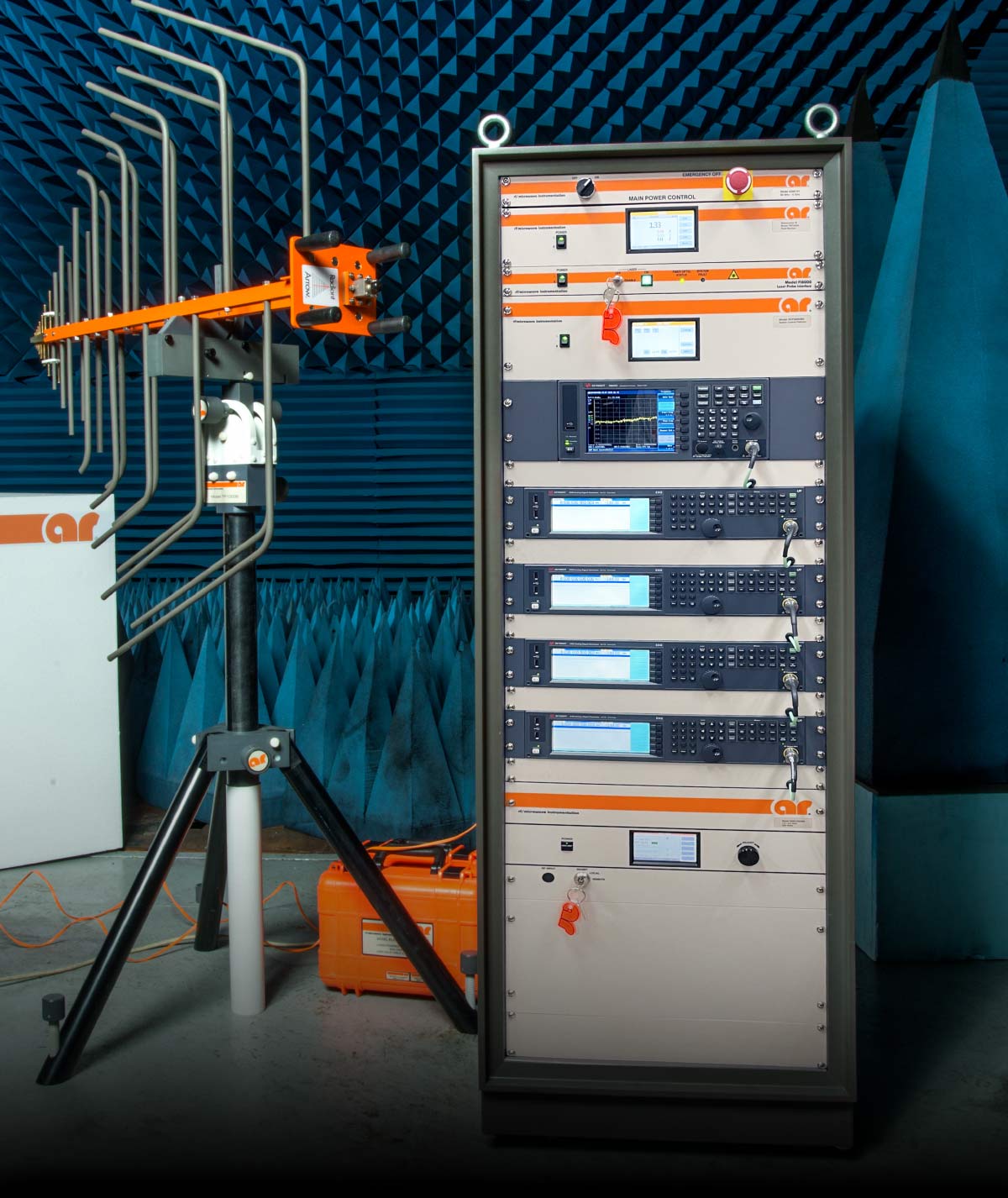
Testing Time by More Than 50%
For example, AR’s Multi-Tone System can reduce the typical time to run traditional tests such as IEC 61000-4-3, ISO 11451, and ISO 11452, by over 50%. In the event of an EUT failure, margin investigation and traditional single tone testing is easily performed through AR’s emcware® software.
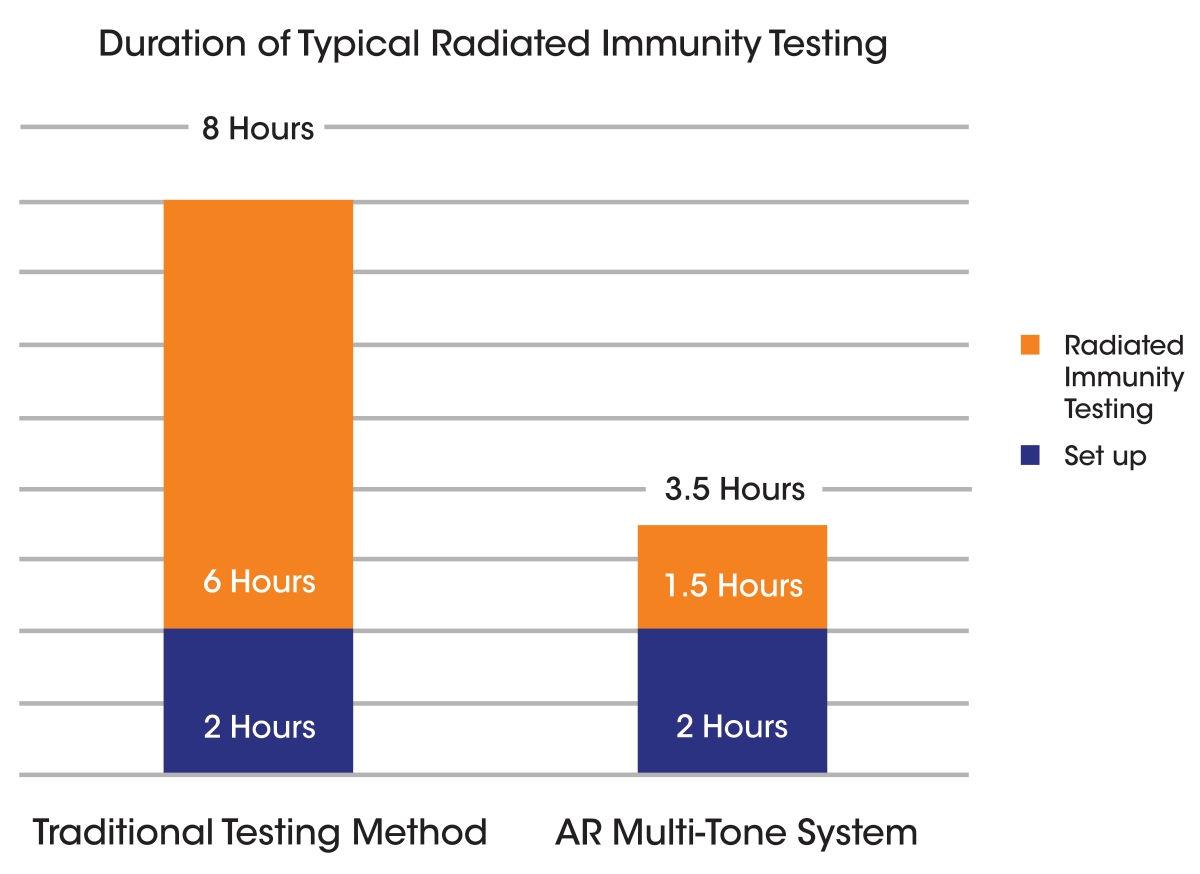
This is a creative way to help your company be more profitable by using your assets more efficiently.


